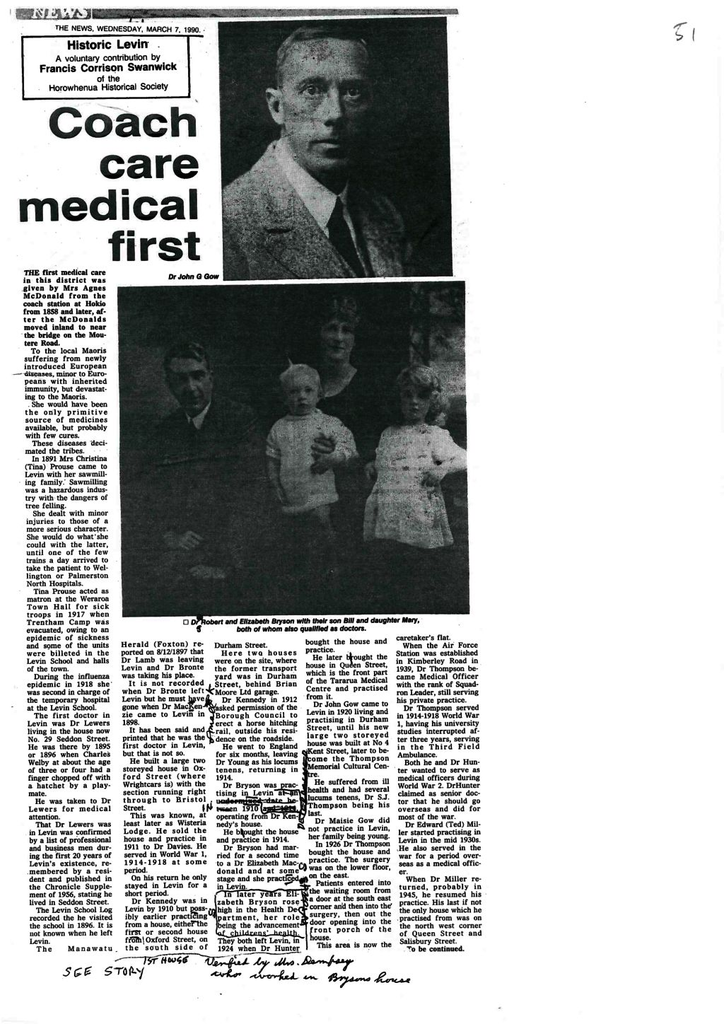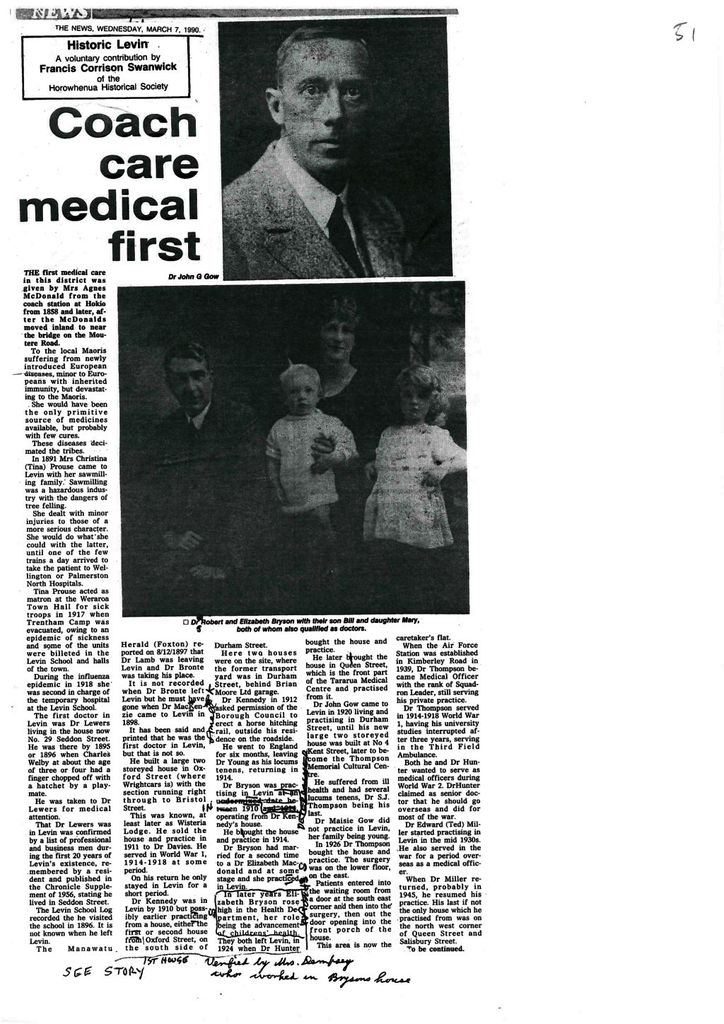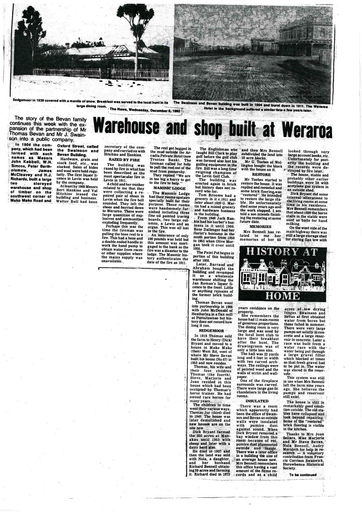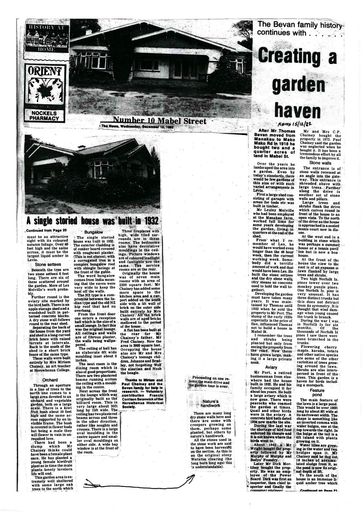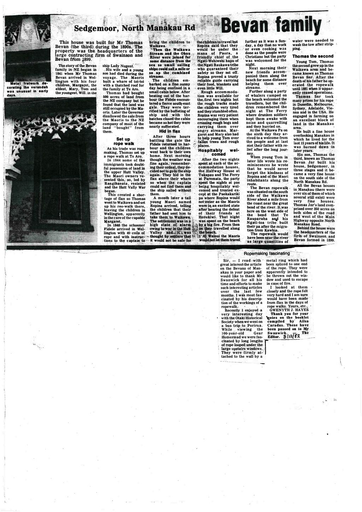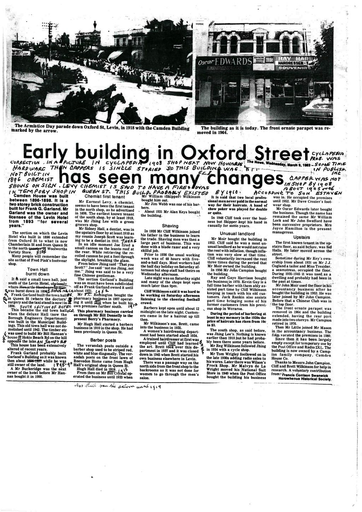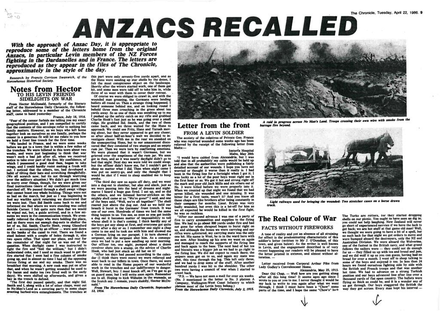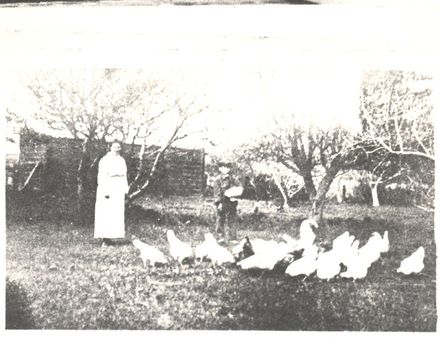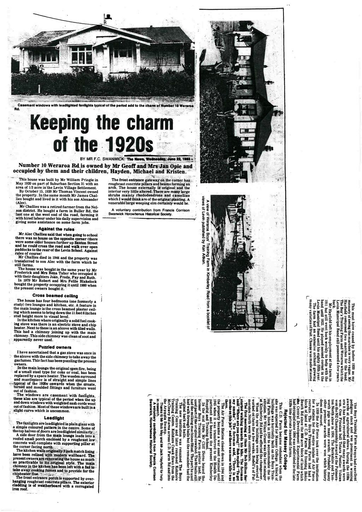Coach Care Medical First
- Description
To the local Maoris suffering from newly introduced European diseases, minor to Europeans with inherited immunity, but were devastating to the Maoris.
She would have been the only primitive source of medicines available, but probably with few cures. These diseases decimated the tribes.
In 1891 Mrs Christina (Tina) Prouse came to Levin with her sawmilling family. Sawmilling was a hazardous industry with the dangers of tree felling.
She dealt with minor injuries to those of a more serious character. She would do what she could with the latter, until one of the few trains a day arrived to take the patient to Wellington or Palmerston North Hospitals.
Tina Prouse acted as matron at the Weraroa Town Hall for sick troops in 1917 when Trentham Camp was evacuated, owing to an epidemic of sickness and some of the units were billeted in the Levin School and halls of the town.
During the influenza epidemic in 1918, she was second-in-charge of the temporary hospital at the Levin School.
The first doctor in Levin was Dr Lewers living in the house now No. 29 Seddon Street. He was there by 1895 or 1896 when Charles Welby at about the age of three or four had a finger chopped off with a hatchet by a playmate. He was taken to Dr Lewers for medical attention.
That Dr Lewers was in Levin was confirmed by a list of professional and business men during the first 20 years of Levin’s existence, remembered by a resident and published in the Chronicle Supplement of 1956, stating he lived in Seddon Street.
The Levin School Log recorded that he visited the school in 1896. It is not known when he left Levin.
The Manawatu Herald (Foxton) reported on 8/12/1897 that Dr Lamb was leaving Levin and Dr Bronte was taking his place.
It is not recorded when Dr Bronte left Levin but he must have gone when Dr Mackenzie came to Levin in 1898.
It has been said and printed that he was the first doctor in Levin, but that is not so.
He built a large two storeyed house in Oxford Street (where Wrightcars is) with the section running right through to Bristol Street.
This was known, at least later as Wisteria Lodge. He sold the house and practice in 1911 to Dr Davies. He served in World War I, 1914 - 1918 at some period. On his return he only stayed in Levin for a short period.
Dr Kennedy was in Levin by 1910 but possibly earlier practising from a house, either the first or second house from Oxford Street, on the south side of Durham Street.
Here two houses were on the site, where the former transport yard was in Durham Street, behind Brian Moore Ltd garage.
Dr Kennedy in 1912 asked permission of the Borough Council to erect a horse hitching rail, outside his residence on the roadside.
He went to England for six months, leaving Dr Young as his locums tenens, returning in 1914.
Dr Bryson was practicing in Levin in 1910 operating from Dr Kennedy’s house.
He bought the house and practice in 1914.
Dr Bryson had married for a second time to a Dr Elizabeth Macdonald and at some stage she practised in Levin.
Photo at left shows Dr Robert and Dr Elizabeth Bryson with their son Bill and daughter Mary both of whom also qualified as doctors.
They [Robert and Elizabeth] both left Levin, in 1924 when Dr Hunter bought the house and practice.
He later bought the house in Queen Street, which is the front part of the Tararua Medical Centre and practised from it.
Dr John Gow came to Levin in 1920 living and practising in Durham Street, until his new large two-storeyed house was built at No 4 Kent Street, later to become the Thompson Memorial Cultural Centre.He suffered from ill-health and had several locums tenens, Dr S. J. Thompson being his last.
Dr Maisie Gow did not practise in Levin, her family being young.
In 1926 Dr Thompson bought the house and practice. The surgery was on the lower floor, on the east side. Patients entered into the waiting room from a door at the south east corner and then into the surgery, then out the door opening into the front porch of the house. This area is now the caretaker’s flat.
When the Air Force Station was established in Kimberley Road in 1939, Dr Thompson became Medical Officer with the rank of Squadron Leader, still serving his private practice.
Dr Thompson served in 1914 -1918 World War I, having his university studies interrupted after three years, serving in the Third Field Ambulance.
Both he and Dr Hunter wanted to serve as medical officers during World War 2. Dr Hunter claimed as senior doctor that he should go overseas and did for most of the war.
Dr Edward (Ted) Miller started practicing in Levin in the mid 1930s. He also served in the war for a period overseas as a medical officer.
When Dr Miller returned, probably in 1945, he resumed his practice. His last if not the only house which he practised from was on the north west corner of Queen Street and Salisbury Street.
THE NEWS, WEDNESDAY, MARCH 7, 1990.
Identification
- Date
- March 7, 1990
Taxonomy
- Community Tags

